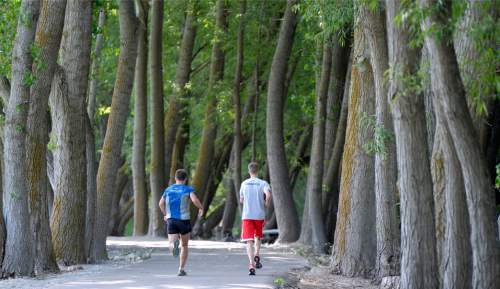This is an archived article that was published on sltrib.com in 2015, and information in the article may be outdated. It is provided only for personal research purposes and may not be reprinted.
The nation's focus turned toward Utah County last week when the Orem Owlz announced, then canceled, Caucasian Heritage Night. The rookie-league baseball team apologized, saying its "intentions have been misconstrued."
Many wondered how and why such an event — billed as featuring Wonder Bread and "Seinfeld" clips, and celebrating Irish, Italian, Scandinavian, German "or even Utahn" backgrounds — had been planned in the first place. And a new study showing that Orem and neighboring Provo are incredibly unlike the rest of the country could provide part of the answer.
According a study by WalletHub, the Provo-Orem metro area is about as dissimilar to the rest of America as you can get — despite the fact that Provo is home to the annual America's Freedom Festival.
Weighing factors such as race, housing, income and education, the WalletHub study ranked Provo-Orem 376th of 381 of the United States' largest cities in terms of resemblance to the country.
In other words, Provo and Orem don't look much like the rest of the nation.
Provo-Orem's white population is 18 percent higher than the national average. Its black population is 12 percent below average; its Hispanic population 6 percent.
That means if you are black or Hispanic in Provo or Orem, you're more of a minority than you are in the United States, said Jill Gonzalez, a spokeswoman for WalletHub.
"We might think what's around us is the norm," Gonzalez said, "and a lot of times that is not the case."
Provo Deputy Mayor Corey Norman said "there's always room for improvement," but declined to say what specifically the city could improve on.
"I'm just going to say what we do that's awesome," he said. Access to outdoor recreation and business, for example, make Provo "awesome," he said.
"We're not like other places in America, that's true."
The study results "might be a call to action since certain groups are more of a minority in Provo, maybe more support groups should be available," Gonzalez said.
"As a community, diversity can be a real strength but it is something we need to embrace as a community," said Steven Downs, Orem assistant city manager. "Our hope is that we can continue to grow our diversity."
Another factor that pulled Provo-Orem to the bottom of the ranking was age: 40 percent of the population in the metro area is younger than 19. The national average is 26.3 percent.
Provo, home to LDS Church-owned Brigham Young University, is also one of the most-educated cities in the country — it ranks fourth in the nation. Orem boasts Utah Valley University.
Plus, the area is one of the most male-dominated: At 50 males to 46 females, it ranks 302 out of 381 in metro areas' male-to-female ratio.
In the study's overall ranking, Salt Lake City was 238th. St. George came in at No. 309. Ogden ranked below that at No. 343, and Logan at 365.
Salt Lake City's demographics pull it in the same direction as Provo, Gonzalez said, but other factors tilt it back toward the U.S. "norm."
For instance, Salt Lake City's population is younger than the nation, but not as young as Provo's. The city is more diverse, too. Gonzalez said there is a positive correlation between a city's size and how well it mirrors the U.S. population.
A breakdown of small, medium and large cities is also available in the WalletHub report.



